Google has never been completely transparent about ranking criteria! That’s why there are many speculations about Google ranking factors.
Some have tried to clarify these criteria as much as possible by trial and error and some by following facts such as what Google itself or its known employees have said about the criteria.
6 main Google ranking factors that you must know!
In the first part of the article, we go to the 6 main factors that are directly or indirectly effective in the ranking. Let’s start with the first and most definitive factor: valuable content!
Creating valuable and useful content for the audience
Let us be honest with you from the beginning. If you are producing content to be seen in Google search results, you should not write for yourself; Of course, just writing for Google won’t cure the pain either.
In content production, the goal is to solve the audience’s problem or answer his question; Google’s criteria for ranking the results of each search is the same.
Google is constantly updating its algorithms to identify useful content for the user. Here we mention some criteria that are important in Google ranking.
Being useful, valuable and unique
Your content should solve problems and add value to the user; Otherwise, he will leave your page within seconds. Merely translated information that has no use for a Canadian audience, or outdated information that is no longer useful, does not have this feature.
On the other hand, when your content is read to the end, it is not only valuable, but also written simply and fluently.
related
Google tries its best to guess the user’s search intent and show them the most relevant result; What you should do too. The most straightforward way to understand user intent is to look at the top search results for that query. To clarify the issue, let’s examine an example together.
When users search for the term “airfryer” on their own, they want to know what the device is and are likely just starting their research. So a tutorial with buying tips is in order for them:
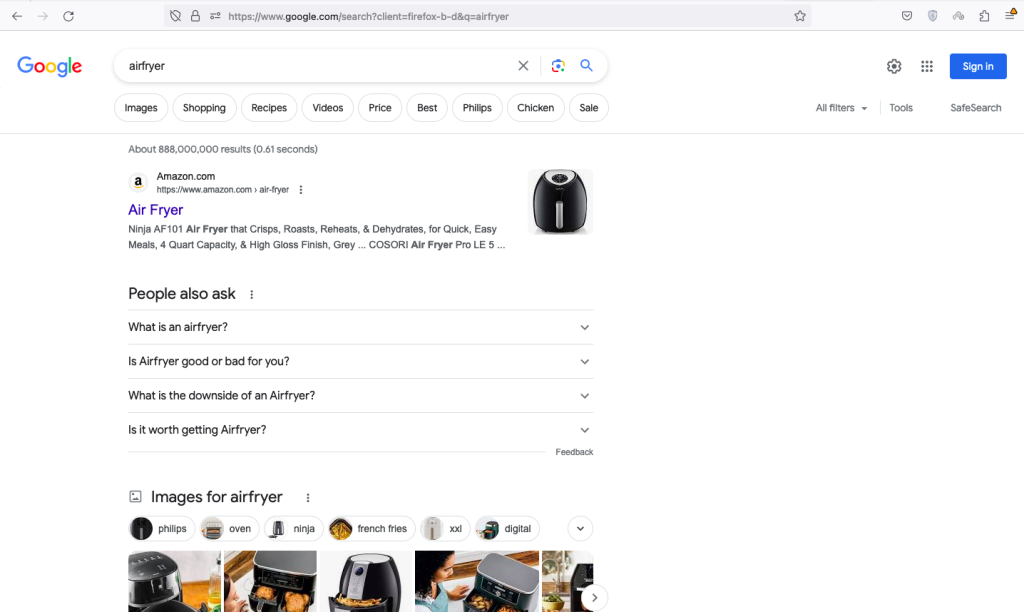
Whereas, if users search for the term “buy airfryer”, it means they know what this device is and intend to buy it. Now they may be looking for the latest prices or want to check the differences between several brands.
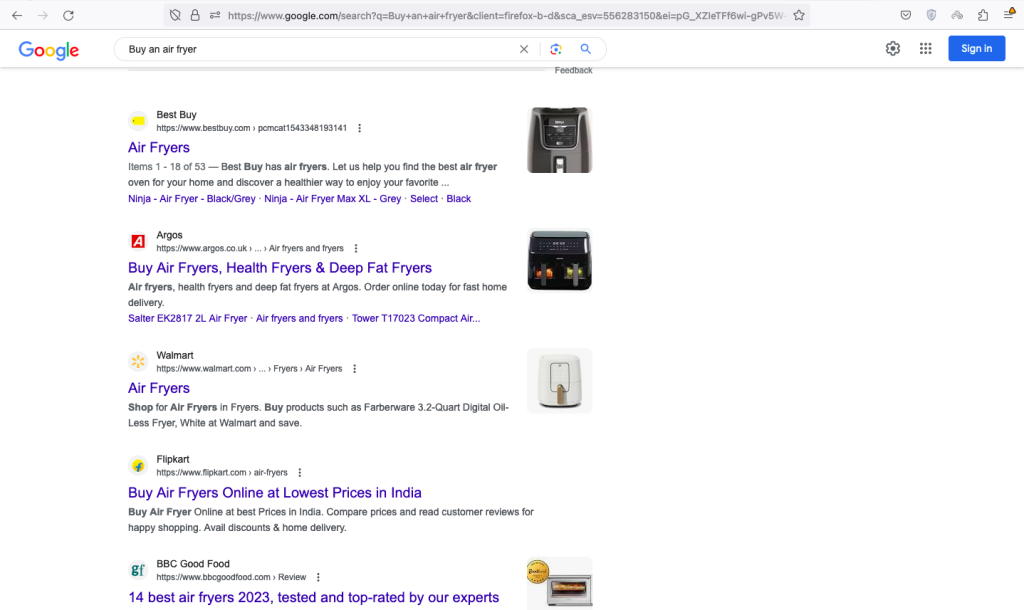
Knowing the user’s intent from searching for a specific phrase will help you prepare content related to the same phrase. You should specify this issue in keyword research, which we suggest you read the article “Keyword research training + its tools”.
novelty
Google measures the freshness of content with the Freshness algorithm; But this algorithm is not applied to all queries or search terms. According to research results, Google’s novelty algorithm is one of the ranking factors; But this does not mean to change the date of the content constantly!
This algorithm ranks search results related to time-dependent terms. such as the following:
They are related to hot topics or events of the day
They are about recurring events like the Olympics or the World Cup
should be updated frequently; Like articles introducing the best or reviewing productsIn the image below, you can see that all the results refer to time.
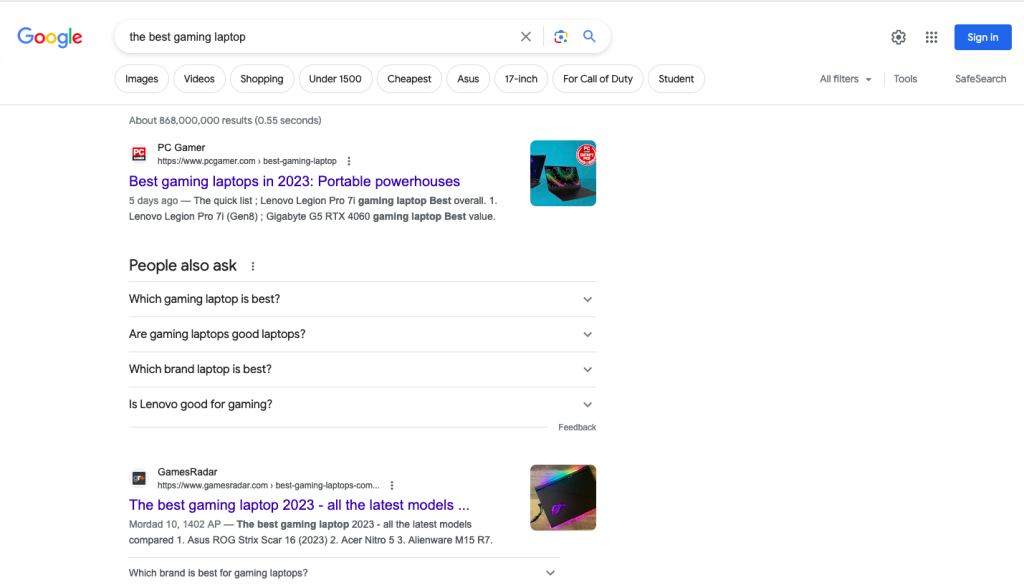
Being experimental
Users are interested in results based on first-hand experiences, which is one of Google’s priorities.
Suppose you want to buy a phone. Would you rather read content from someone who has seen and worked with the phone up close, or someone who has simply gathered information from various sources?
It is important to be experimental about educational topics, introducing, explaining, reviewing products and services, etc.
For example, between 2 content about “Canada’s best restaurants”, content based on the author’s experience has a chance to win.
Mobile friendly design
Mobile compatibility became important in the ranking of mobile search results from 2016, and from 2020, Google prioritized the mobile version of sites in indexing sites.
It is not far from the mind! Because according to statistics, more than 60% of Google searches are done with smartphones.
Of course, as said, if a page has high quality and valuable content, it can still rank without being mobile friendly; But the unfavorable experience of browsing and being on the page for mobile users does not allow them to notice the quality of your content and the rank decreases.
In mobile friendly design, speed is also important. The lower the speed, the more users you lose, those users who are convinced to click on your result after a lot of effort, cost and time. This issue is doubly important in mobile phones, which is not possible without compatibility with mobile phones.
User experience
The user experience on the pages of your site is effective in SEO. Users are not looking for the treasure map on the pages of your site! If everything is not simple, fast and straightforward, they will soon get confused and frustrated and leave the page.
The following parameters are involved in the formation of user experience:
Site structure
Site architecture or structure is an important factor in Google ranking. Good structure benefits you in 2 ways:
1.They simplify the user experience
The architecture of the site should be such that the user can reach any page with 3 or 4 clicks. The following image shows a corner of hinet site architecture:
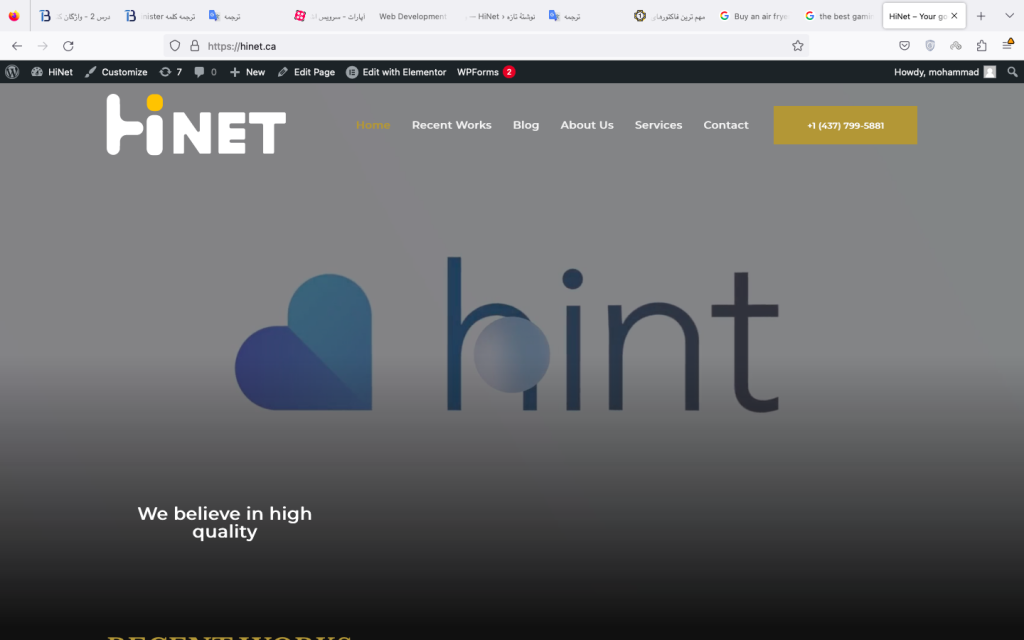
2. They help Google’s crawlers find and index more pages of your site
Here you have 2 ways to increase the index speed:
Prepare a site map. These maps make it easier for crawlers to discover new pages and index them
Optimize your robots.txt file. This file tells the robots which pages to pay attention to and which pages to ignore
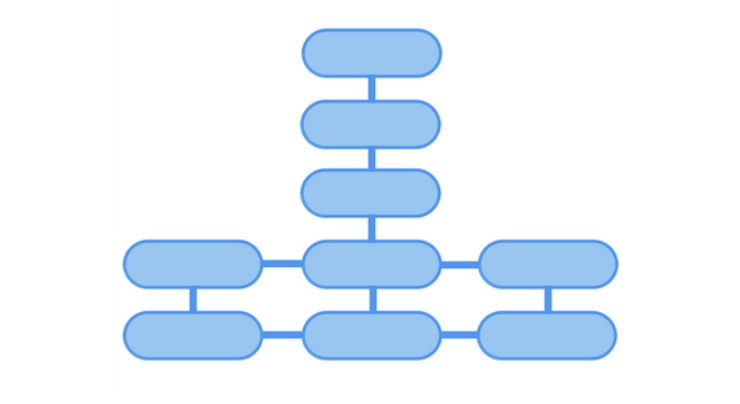
Site security
HTTPS protocol increases website security for users; Something Google loves. See the image below. The security of the page is fully mentioned.
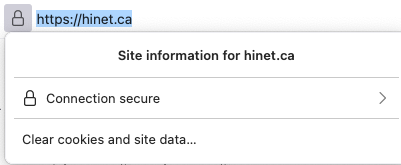
HTTPS is important and effective for Google; But it is considered a lightweight factor; That is, even if your site is HTTPS, with good content you may get to the first page; But in competition with a site that is HTTPS, you will fail for 2 reasons:
Google will rank that site higher than yours
Users may opt out by receiving a warning when opening your page
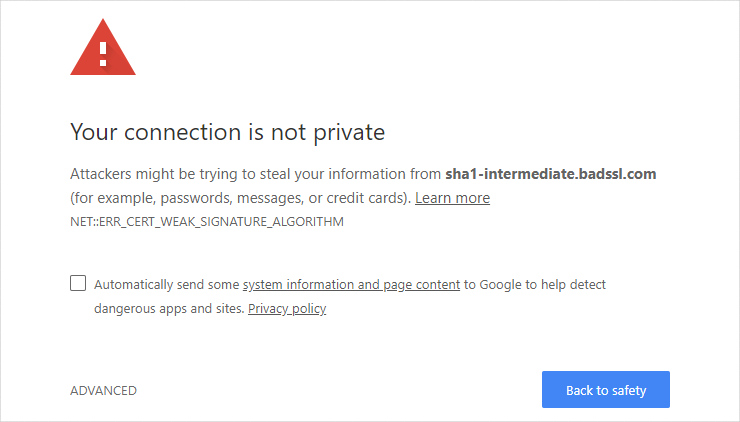
These 2 issues have led us to the point where, according to the latest published statistics, 95% of websites in Google search results use HTTPS.
Core Web Vitals
There are 3 important criteria for user experience and SEO:
Loading speed (Largest Contentful Paint): This measure refers to the time it takes to load the main content of the page; Like the product photo, which should be uploaded soon
Interaction (First Input Delay): This measure tells how long it takes for the user to interact with the page; For example, there should not be a long time between clicking the button and the desired action of the user
Visual stability (Cumulative Layout Shift): The third criterion determines whether your page is displayed regularly to the user or is not stable and has annoying items!
See an example of instability in the image below:

Note: By the end of this year, FID will be replaced by INP, and this criterion will be removed from Google’s criteria. Simply put, FID takes into account the time delay of the first interaction; While INP looks at the entire user interaction cycle.
If the number of interactions is less than 50, the worst interaction is considered; But if it is more than 50, 98% interactions are considered.
How to display ads
Neither Google nor the user likes big ads that disturb the visibility of the content. The Chrome browser does not display ads from sites that do not meet the Better Ads standard, and Google has clearly warned sites about using unsolicited interstitial ads.
Unsolicited interstitial ads are the same pop-ups that used to pop up as soon as the site was opened and took the user to another page.
Google has 3 recommendations for using interstitial ads:
Use banner ads instead of interstitials
Do not cover the entire page with ads
Do not take the user to another page to log in or obtain consentThe image below is an example of an interstitial ad that covers the entire page.

Internal SEO (on-page SEO)
Internal optimization is the bridge between Google’s crawlers and your site’s content and informs them of your page’s information; But it cannot show that your content is more useful or valuable than your competitors.
When it comes to Google rankings, you probably hear a lot of phrases like, “Get your keyword in the title!” Face it, they are considered a subset of internal SEO.
Some things like schema, optimization for Google Discover and feature snippet have no impact on Google ranking. What matters to Google is whether your content is what the user wants or not. (Quality and communication).
For this reason, we try to include keywords in text, image alt tags, and internal titles to signal to Google’s bots: (for example) my content is about “content marketing”! Among other influential parameters, we can mention compatibility with mobile phones, which we reviewed above.
Metadata is one of the important parameters in internal SEO, which includes information that we give to the user on the search results page; Like the title (SEO) and meta description.
The important things you should follow are:
Using keywords in the title and meta description
Write a title and description that will make the user click on your linkOf course, Google may extract and display another description and title from the content based on the user’s search term; But paying attention to these 2 important parameters will make you have more chances to click.
Note: use keywords correctly in the text; Because improper distribution and excessive use of the photo has an impact on the ranking. We know this issue with “keyword stuffing” which has a negative impact on rankings.
Internal SEO is responsible for showing how relevant your content is to the user’s search term, and overdoing it doesn’t do any good. Instead of overusing keywords, invest in the content itself. Good content has 2 characteristics:
Be valuable to the user
You can link to it
easy and quick to obtain and read (user experience)
Therefore, pay attention to simplicity, valuable images (such as infographics), readability, content accuracy, correct structure, etc.
Internal optimization makes both users and Google find your content much faster. In general, the important internal SEO parameters that play a role in ranking are:
The degree of relevance of the content to the user's desire
Reliability of content
Content readability
Using keywords (correctly and in the right number)
Image optimization
Having expertise (for example, you have published many posts in the field of digital marketing and have gained a good reputation)We said that feature snippets, schema codes or presence in Google Discover do not affect your rank; But should they be restricted? No! Being on the results page is one thing, audience attraction and click rate is another thing! These items have a direct impact on your click rate.
5. Internal link structure
Internal linking is one of the confirmed factors that influence ranking in Google. All the links in the corners of the page are part of the internal linking.
Internal links are the road map that guides Google to find new pages of your site.
Building a new page without linking to it is like building a room without any doors or windows; Neither Google nor users will find it. That is why we call such a page an orphan page.
The important question is, how can we have a positive effect on the ranking with link building?
By making the best experience for the user from browsing your site!
Google has recommendations for better internal linking:
Help the user to be directed from general and general contents to specialized contents
Place internal links where they are appropriate and relevant and where the user is likely to be interested in the information
Try to find all the pages of the site without the need to search, through internal linksThe anchor text is the second part of every link, which should be paid attention to when writing it:
Describe the page the user is going to be redirected to. Phrases like “click here” or “this article” are not appropriate
Keep it brief and don’t fill it with keywords
Use words like “purchase”, “price” and… in the purchase-oriented anchor text; For example, “buy digital currency” instead of “digital currency”!
Tip: Once you’ve written your anchor text, see if it makes sense on its own. For example, compare “cheap models” and “cheap phones”. If the user sees the second one alone, he will understand what it is about.
When you give a lot of links from within the site to a content, Google understands that this content is more valid and important, and the use of irrelevant anchor text destroys this effort.
In each content, you may link to some other sites, which we call external links. These links show the validity and accuracy of your content.
After internal linking, it’s time to get good backlinks.
Getting valid and relevant backlinks
A backlink is a link from other sites to your website. This factor has been important since Google started using the algorithm to rank results until today!
If you want to create backlinks that Google will give a positive rating to, pay attention to 2 points:
- As stated clearly, the number of backlinks does not matter!
The number of backlinks is a factor that can be easily manipulated; For this reason, Google doesn’t care if you have 10 backlinks or a million; What matters is the next one.
- Validity and relevance of the linking domain is a Google ranking factor
Note: The number of good backlinks (the second item) is effective in ranking. As a rule, 30 valid and relevant backlinks are better than 3 valid and relevant backlinks.
So far, we have learned about 6 important and definitive factors for Google; We realized that the value and validity of the content along with the speed and user experience make us get a good rating. However, there are still many unclear points about Google’s factors for ranking, which we will discuss below.
Before that, we have a suggestion for you to produce valuable content. Download the “Content Evaluation Checklist” for free and measure your content based on the parameters we have included!
Frequently asked questions about Google ranking factors, from rumors to reality!
In this section, we answer some frequently asked questions about ranking factors, according to various evidences from the conversations of Google employees, its official statements and empirical findings.
Is the ALT tag of images one of the Google ranking factors?
The quick simple answer is: yes. Image replacement tag is one of the factors that Google considers for ranking.
The best ALT tag is a tag that contains both the keyword and describes the image ; But this does not mean that you should include the keyword in it in any way. What we mean is that you write an explanation for the images and describe it, and where it is natural, include the keyword in your description.
Important note: Do not fill the ALT tag with only keywords! For example, instead of “retargeting ads” for the image below, use “how does retargeting ads work?” Or use “retargeting ads display process infographic”.
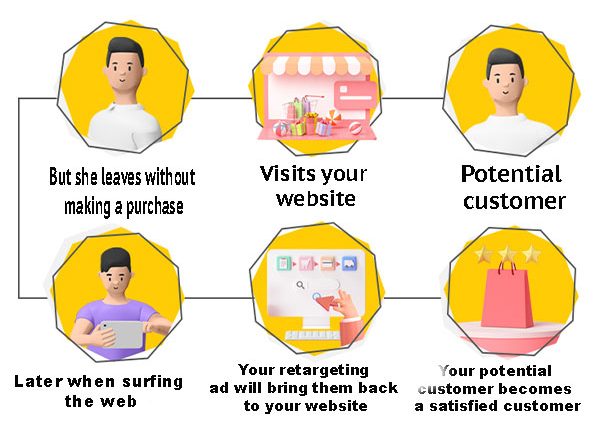
Is bounce rate one of the Google ranking parameters?
Bounce rate represents the percentage of users who leave the site after entering a page without visiting other pages (without interaction).
Google has explicitly stated many times over time that it does not use Google Analytics metrics, including bounce rates, for ranking. There are 3 reasons why Google’s claim is true:
- Bounce rate is not indicative of bad user experience or low content appeal. If the user finds his answer completely on the same page, he does not need to go to another page
- Not all sites use Google Analytics. As a result, Google does not know the bounce rate information of all sites
- The bounce rate can be easily manipulated and changed
So the answer to this question is not clear and definitive.
How does copy content affect our ranking?
There is no doubt that Google prefers unique content. If the content on a page is duplicate or too similar to content on another page, Google’s crawlers may not even index it.
Worse, if a site frequently publishes duplicate content, Google’s bots are less likely to crawl it.
Does keyword density have an effect on article rank?
Keyword density was once important to Google; But it has not been like this for years. No specific repetition of the keyword is considered optimal repetition.
Google’s recommendation is to write a long enough article based on the selected keyword that the keywords are used naturally.
Remember that excessive use of keywords is a negative signal for Google! Additionally, Google recognizes synonyms. You can use its synonyms instead of filling the content with the keyword.
Does domain validity affect Google ranking?
If domain authority means criteria like Moz’s Domain Authority, no! Google never uses the tools and criteria of third-party companies for ranking, and Google itself does not have any criteria called domain authority.
John Mueller has repeatedly pointed out on Twitter and Reddit in response to users that Google does not use anything called domain authority to index and rank results.

